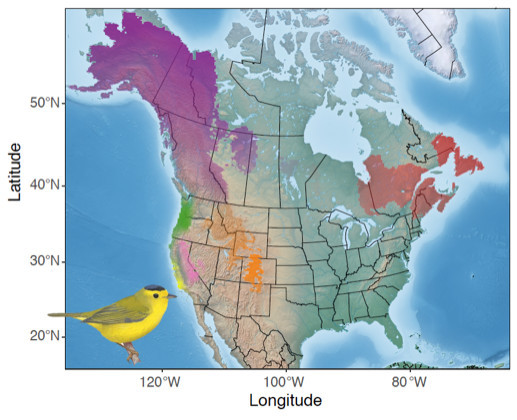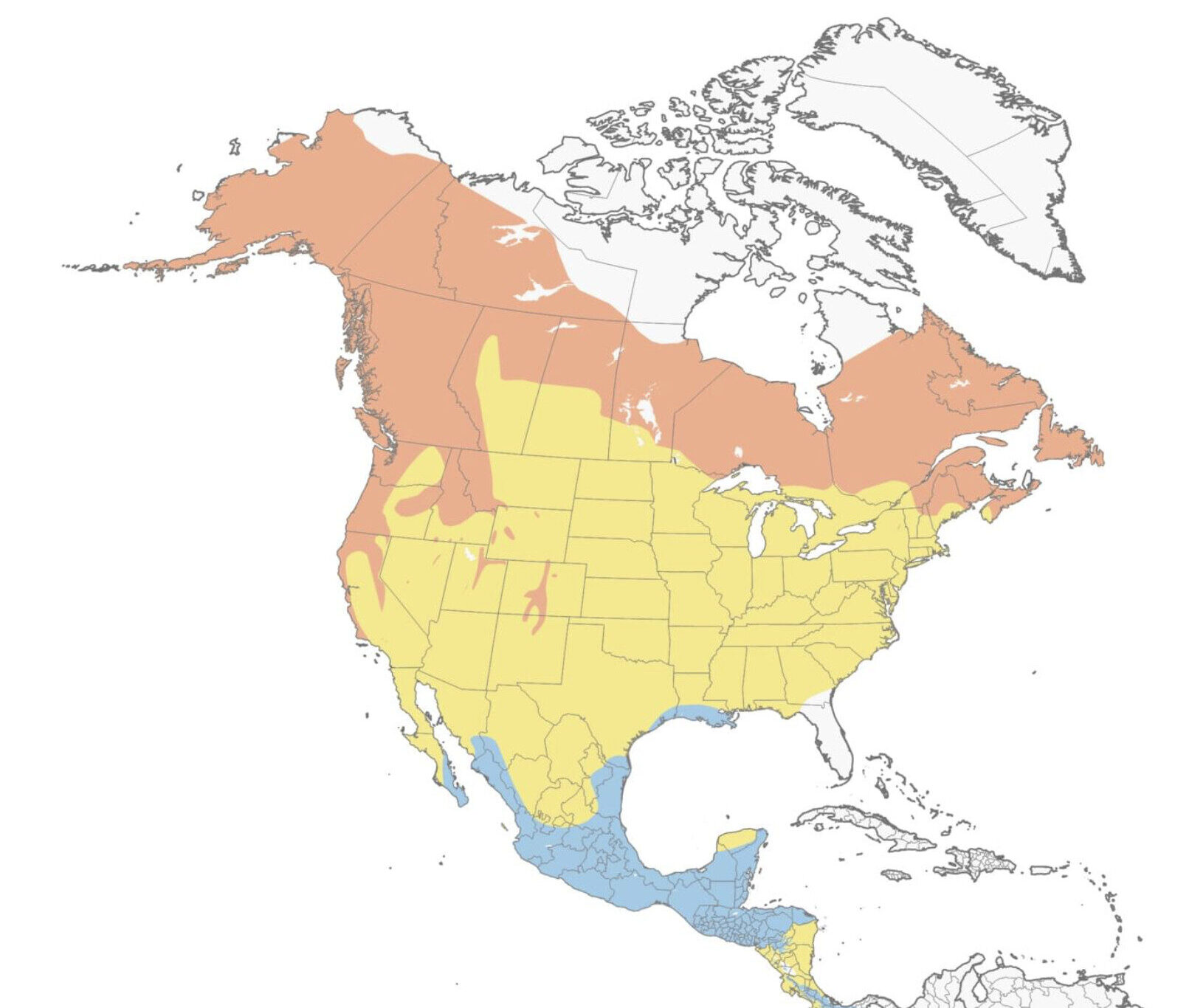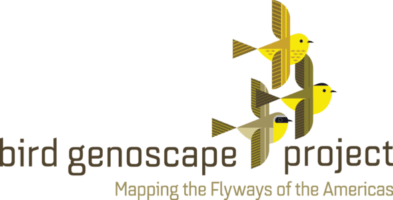Watch this video from our partners at Day’s Edge Productions to learn what a genoscape is and what work goes into making one.
What is a Genoscape?
A genoscape is a map of genetic variation across the breeding range of a species. Genoscapes can then be used to track breeding populations to their respective wintering grounds and the migratory pathways in between. By harnessing recent advances in next-generation sequencing, we can use the DNA contained in a single feather to scan the genome of a bird and identify base pairs that are unique to each bird. Unique combinations of base pairs tend to cluster together and are strong predictors of geographically separated populations. This allows us to create the genoscape!
For example, the genoscape of Wilson’s Warblers (Cardellina pusilla) helped identify six genetically distinct breeding sub-populations: Alaska to Alberta (purple), eastern North America (red), the Southern Rockies and Colorado Plateau (orange), the Pacific Northwest (green), Sierra Nevada (pink) and Coastal California (yellow; Figure 1A). Using DNA from feather samples collected during migration and on the wintering grounds, we were then able to link breeding populations to where they overwinter and identify population-specific migratory routes between these areas. Compared to the existing species-wide range map (Figure 1B), genoscapes provide more detail about population-specific ranges and migratory routes.

Figure 1A: Wilson’s Warbler Genoscape across the breeding range in the United States and Canada.

Figure 1B: Current range map of Wilson’s Warbler; source: All About Birds
